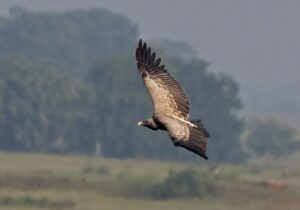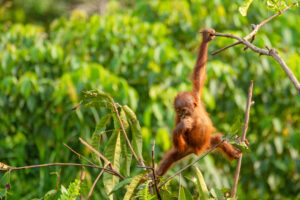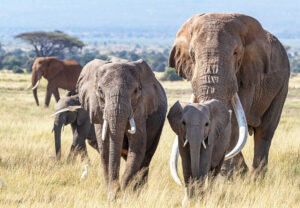In early 2023, a camera in Colorado caught a black bear posing for hundreds of photos. The camera trap took 580 images in total, and 400 of them were of the curious bear. This curiosity is part of what makes bears more intelligent than most people realize.
Typically, animals ignore camera traps, but “bears are probably more naturally curious about how things work than some other species,” psychologist Jennifer Vonk told Popular Science.
Bears can count
Vonk has studied bears for over a decade. Animal cognition studies have rarely involved bears, despite their fairly large brains. Instead, they’ve focused on primates and other social animals. Social species tend to be more intelligent, and bears are largely solitary creatures.
But recent studies have yielded surprising results. Vonk’s research showed that American black bears can count. Vonk’s team trained three bears to pick between groups of dots on a touchscreen. Two learned to pick the group with fewer dots, and the third learned to pick the group with more. Regardless of the size of the dots, the bears could select the correct group based on the number. Remarkably, the bears learned this skill faster than chimps and gorillas.

A sloth bear scratches its back on a tree. Photo: Shutterstock
They might even recognize you
Another study, by a different team, showed that American black bears could recognize images of people and objects if the bears had seen them in real life. This picture-object recognition is something that was previously observed in rhesus monkeys, pigeons, tortoises, and horses.
A later study proved that sloth bears also had this skill. Researchers gave sloth bears from the Smithsonian National Zoo a choice of snacks. They could pick melon or mealworms. In real life, they would always pick the former. If presented with photos, they did the same. They recognized the 2D images of the 3D objects.
Researchers initially decided to study bears because of their problem-solving skills. Wild bears often break into trash receptacles and open doors. People have trained captive bears to ride bikes and play instruments. These are incredibly complex tasks.
Bears even use tools, a telltale sign of intelligence. In the wild, bears scratch their backs with branches and use shells to scratch their faces.
Studies confirm indigenous knowledge
Since the 1700s, indigenous people have reported that polar bears use rocks and other objects to help them kill walruses — a dangerous adversary, even for a polar bear. In Alaska, people have observed polar bears throwing ice at seals. In a Japanese Zoo, keepers placed food just out of reach of the bears, and the bears threw sticks and tires to knock the food down.

A polar bear atop a small iceberg. Photo: Shutterstock
In another study, researchers hung donuts out of reach of bears in an enclosure with a tree stump. To get to the donuts, they had to roll the stump underneath the donuts, flip it so they could stand on it, and reach up for the treat. The bears figured it out in less than two minutes.
Some naturalists suggest that bears are so intelligent because they are versatile. They eat a huge variety of food and both hunt and scavenge. They also have to cope with seasonal changes and prepare their bodies for hibernation.
“Bears live in a vast range of environments, from the deserts to the tropics and the Arctic. Animals must exhibit a certain level of intelligence to be able to earn a living almost anywhere on the earth,” said veterinarian Lynne Nelson.






